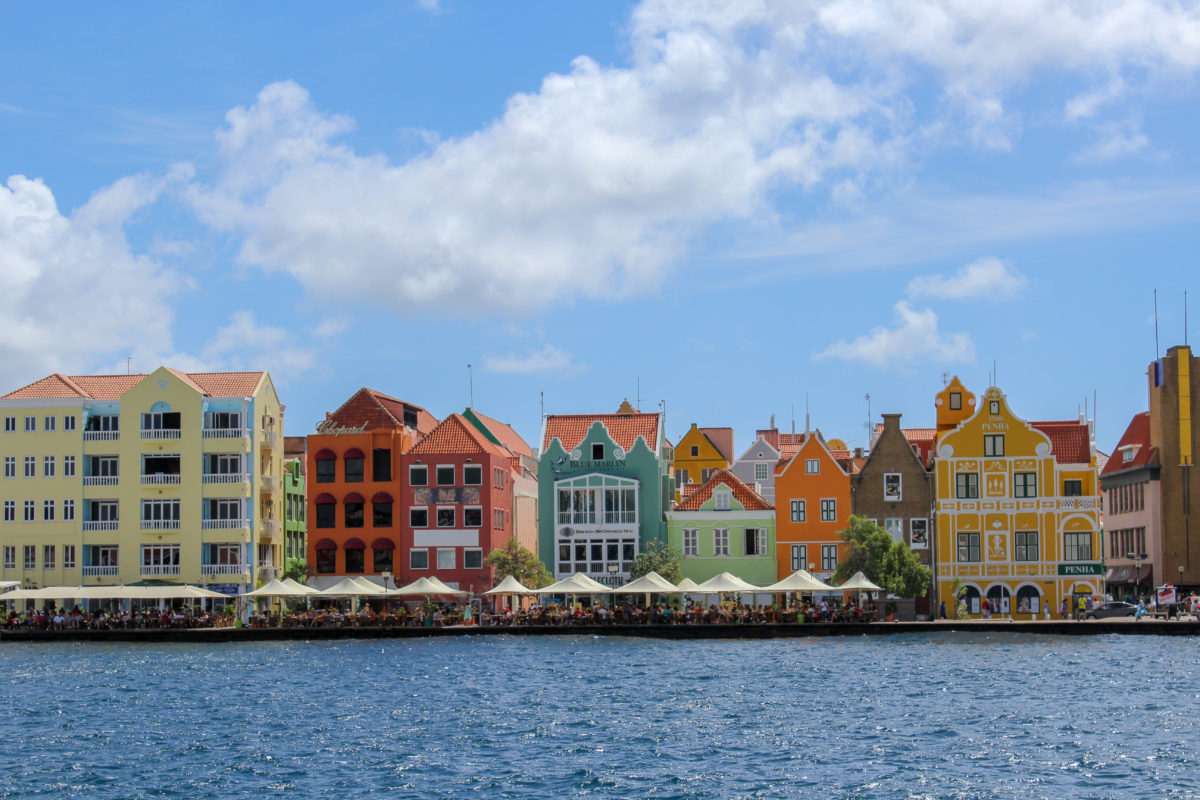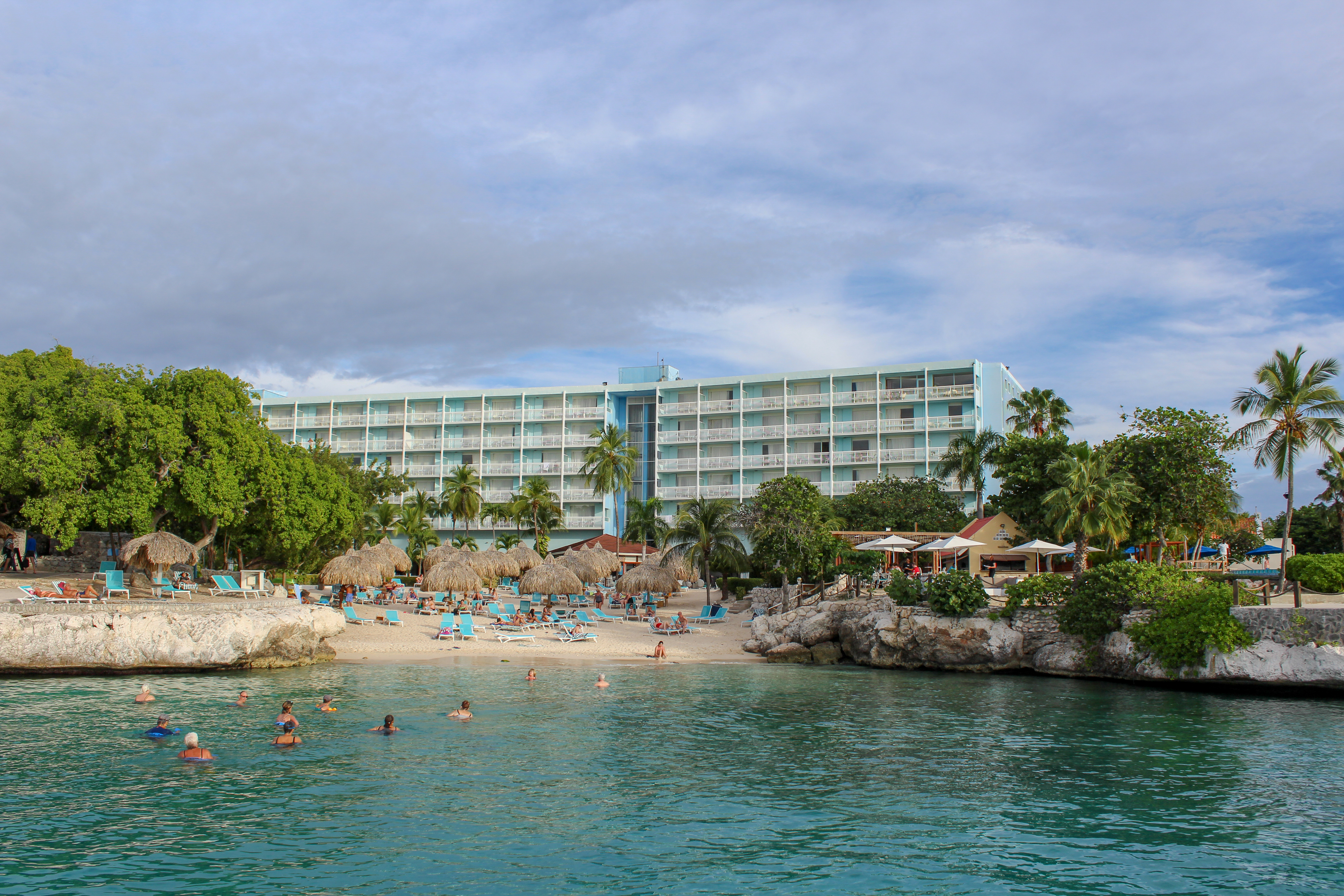
My childhood memories of the Caribbean center on plastic, insulated versions of island life manufactured for cruise goers and naïve American tourists. We would hop from island to island but I never felt like I was seeing any of them. At any moment I expected the curtain to drop revealing the truth behind the sugary cocktails and mass-produced souvenirs.
Curacao is the Caribbean I craved. Located off the coast of Venezuela, this Dutch colony is the least known of the ABC’s. Unlike her sister islands Aruba and Bonaire, Curacao is less permeated by tourism and tourist culture. There’s still some real, raw island life to be had there.
 Both the natural and cultural landscapes of Curacao are extremely unique. Locals know a standard four languages, Papiamento (the tradition island dialect), Spanish, English and Dutch. The proximity to South American brings a heavy Latin influence, but as the island is still “owned” (colonization, you know how sticky it gets), by the Dutch, many natives of the Netherlands move there.
Both the natural and cultural landscapes of Curacao are extremely unique. Locals know a standard four languages, Papiamento (the tradition island dialect), Spanish, English and Dutch. The proximity to South American brings a heavy Latin influence, but as the island is still “owned” (colonization, you know how sticky it gets), by the Dutch, many natives of the Netherlands move there.
The physical landscape is a cross between the desert-like qualities of South America, and the lushness of the Caribbean. Many of the beaches are more pebbles than sand, and the countryside is rife with cacti and dry grasses. A few miles in another direction though, you’ll find catalog-ready sand beaches and palm trees.
Where to Stay
We stayed at the Hilton Curacao. As I wrote in my post about it, I’m typically wary of resorts, but found this property to be a wonderful mix of vacation and realism. It has all the perks of a resort: private beach, happy hour, infinity pool, well-appointed rooms, free breakfast, but sits only a short distance from authentic restaurants and experiences.
 I imagine Hilton Curacao would be good for family getaways. Your relaxation-motivated relatives can sprawl on the beach, or float in the pool, while the adventure seekers can hike mountains and dive off cliffs a short drive away. It’s the best of both worlds, a sandy, sweet compromise.
I imagine Hilton Curacao would be good for family getaways. Your relaxation-motivated relatives can sprawl on the beach, or float in the pool, while the adventure seekers can hike mountains and dive off cliffs a short drive away. It’s the best of both worlds, a sandy, sweet compromise.
What to Do
A stroll through downtown Willemstad is essential, no matter what your interests. The Queen Emma footbridge and bright houses lining the port are postcard perfect. Be warned, the main streets immediately off the bridge on both sides are very touristy. You’re better off going to the Pietermaai district, a hip area full of historic homes repurposed as restaurants, clubs, and galleries. The Scharloo district (located on the same side as Pietermaai) is the street art district, with murals and galleries to satisfy your every craving.
 If that’s not enough art for you, I recommend going to Serena’s Art Factory and Workshop, where they hand-make the Chichi dolls, Curacao’s famous sculptures. “Chichi” means sister, but the figures represent any powerful woman. In addition to watching the artisans make the dolls, you can attend a workshop to paint your own Chichi.
If that’s not enough art for you, I recommend going to Serena’s Art Factory and Workshop, where they hand-make the Chichi dolls, Curacao’s famous sculptures. “Chichi” means sister, but the figures represent any powerful woman. In addition to watching the artisans make the dolls, you can attend a workshop to paint your own Chichi.
If you’re looking for a rush, head to the Ostrich farm next to Serena’s. Curacao has one of the largest ostrich breeding facilities outside Africa. Here you can take a safari tour around the property to learn about the animals and how they’re raised, or you can take an AV tour further out to see other animals in the wild. If you’re really feeling brave you can ride the ostriches, which I did. It wasn’t as scary as I expected but let me tell you, it’s a workout. This is a rudimentary situation, no saddle, nothing to hold on to, just you sitting on an ostrich, clutching its wings and hoping for the best. (I exaggerate a little, the farm employees are there to guide and keep you safe).
As you can see from the photo below, it’s super hard to look cute while riding an ostrich.
 For the more aquatically inclined, cliff diving at Playa Forti is a great option. The drive through the countryside from Willemstad (about 30-40 minutes) was quite scenic. Along the way, I recommend stop at Saint Martha’s lookout for a beautiful view of the ocean and western parts of the island. For a last-minute stop by the airport, you can tour the Hato caves. It’s a pretty short tour, but the caves are interesting and there are few trails on the property too.
For the more aquatically inclined, cliff diving at Playa Forti is a great option. The drive through the countryside from Willemstad (about 30-40 minutes) was quite scenic. Along the way, I recommend stop at Saint Martha’s lookout for a beautiful view of the ocean and western parts of the island. For a last-minute stop by the airport, you can tour the Hato caves. It’s a pretty short tour, but the caves are interesting and there are few trails on the property too.
We didn’t get this far, but beauty queens should check out the Aloe farms, where they make lotions and potions of all kinds with the locally grown plant.
Where to Eat
Something to note about the food culture: dinner isn’t a big thing here. Most locals eat a large meal in the mid afternoon and then stay light in the evening. As a result, many of the very local restaurants are only open for lunch. Downtown Willemstad has exceptions, but even then the restaurants close at 10 or 11. Clubs and nightlife can be found later, but not food.
 Downtown, The Old Market is the most authentic Curacao dining experience. The long, open-air building houses rows of picnic tables and a line of grills run by different food vendors. They serve up island delicacies like red snapper, plucked from the water, slapped on the grill, and served whole, oxtail, which is very delicious but offers limited meat, and goat. The dishes are served with rice or polenta and vegetables.
Downtown, The Old Market is the most authentic Curacao dining experience. The long, open-air building houses rows of picnic tables and a line of grills run by different food vendors. They serve up island delicacies like red snapper, plucked from the water, slapped on the grill, and served whole, oxtail, which is very delicious but offers limited meat, and goat. The dishes are served with rice or polenta and vegetables.
For dinner in Willemstad we went to Mosa, a tapas-style restaurant serving a range of dishes. We had the grilled octopus and risotto. It’s a very nice vibe with a good wine selection. Reservations are helpful in Willemstad as the influx of cruise ships keeps restaurants busy.
Extras
The local currency is Netherlands Antillean guilders, but U.S. dollars are widely accepted even in local markets.
I recommend renting a car. The island is small and it’s worth touring the less populated sides. You can find inexpensive rentals at the airport and mainstream hotels. Cabs are unregulated and can get expensive quickly.
 The electric sockets are the same as the two flat prong and one round prong style of the United States, no adapter needed.
The electric sockets are the same as the two flat prong and one round prong style of the United States, no adapter needed.
Locals are very friendly but service can sometimes be slow. It’s not an intentional apathy, just a culture difference of a slower pace.
Curacao is the hidden gem of the Caribbean. It’s a perfect balance between a tropical paradise and a genuine cultural immersion. It’s also a very affordable and low-maintenance trip without the difficult logistics of other international travel.
I know this was a lot of information! Comment below if you’d like me to expand on any of these topics in a longer post.
Please note: I was provided with complimentary goods and services while in Curacao, however, all opinions expressed are my own.